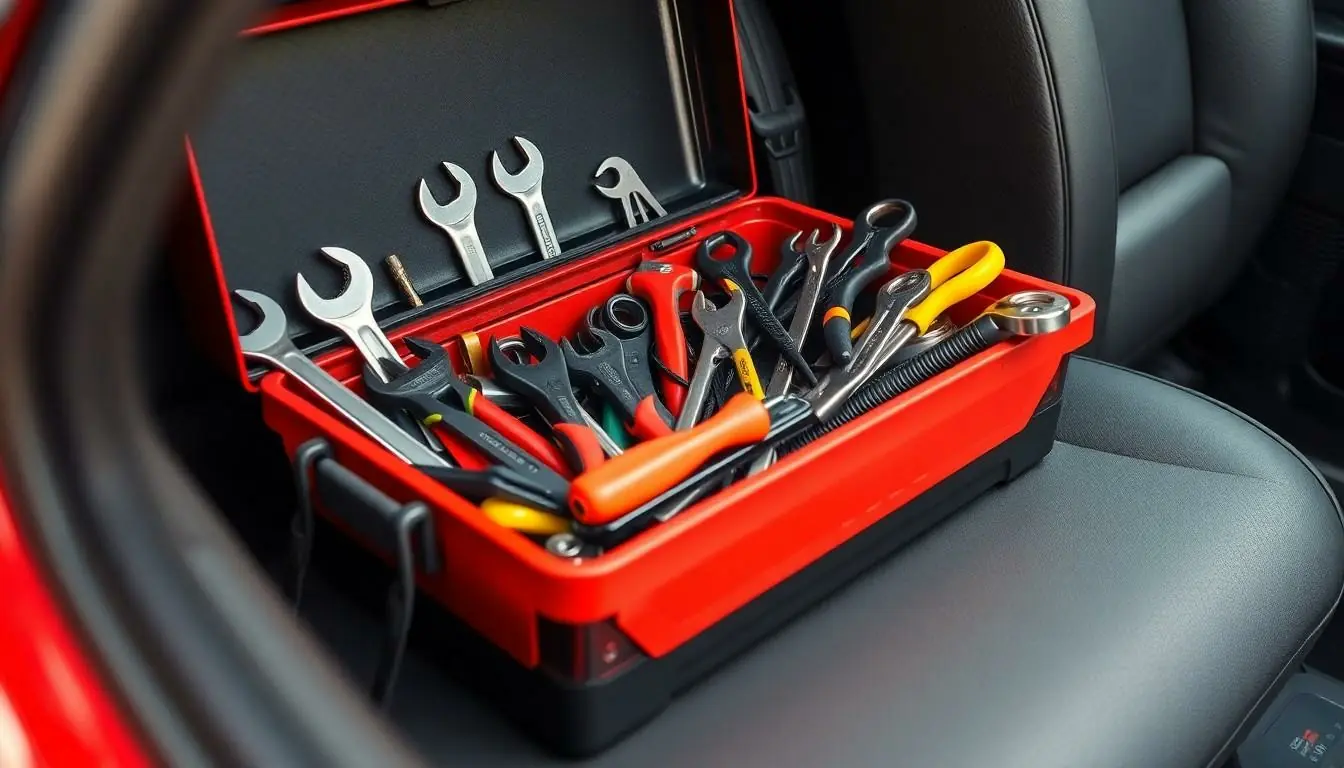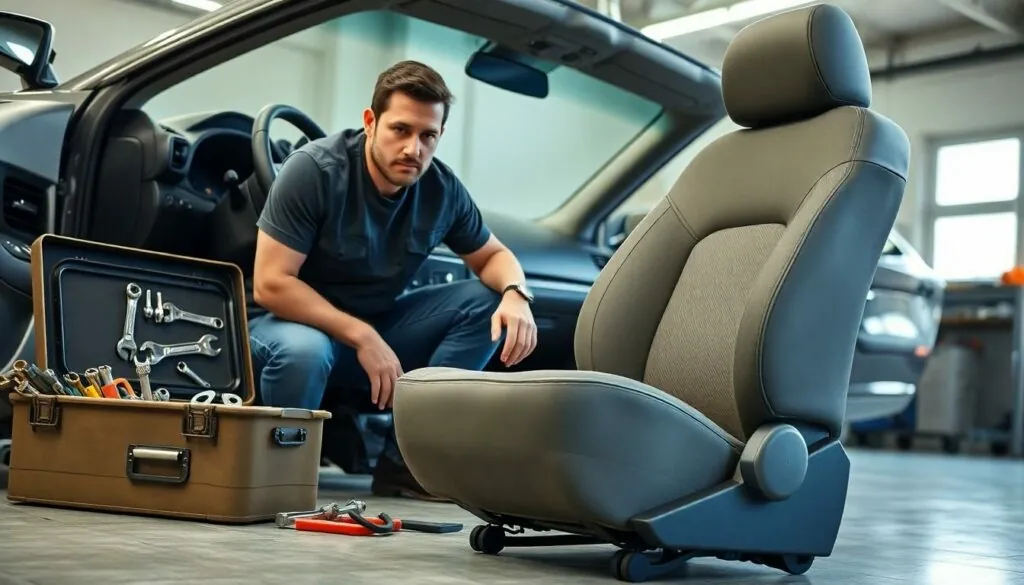Power seats are a luxury most drivers enjoy, but what happens when they decide to throw a tantrum and refuse to budge? Fear not! Manually moving a power seat might sound like a daunting task, but it’s easier than trying to explain a meme to your grandparents. With a few simple steps, you can reclaim your driving comfort and avoid the awkwardness of being stuck in a position that feels like a bad yoga class.
Whether it’s a stubborn motor or a dead battery, knowing how to manually adjust your seat can save the day. So grab your tools and a sense of humor, and let’s dive into the world of power seat rescue. After all, who needs a gym membership when you can get a workout while ensuring you’re comfortably seated for your next road trip?
Table of Contents
ToggleUnderstanding Power Seats
Power seats provide convenient adjustment options for optimal driving comfort. They allow users to find the ideal position with the push of a button.
What Are Power Seats?
Power seats consist of adjustable car seats featuring electronic controls. These seats enable movements such as forward, backward, and tilting with ease. Many models also include lumbar support adjustments, catering to individual preferences. Typically found in higher-end vehicles, power seats enhance overall comfort during long drives. Most systems use a simple up and down movement for quick elevation changes.
Common Issues with Power Seats
Power seats can encounter several common issues affecting their functionality. Electrical malfunctions often prevent the seat from moving, requiring troubleshooting. Wiring issues may interfere with power supply, leading to total inoperability. Mechanical breakdowns can also occur, caused by worn seat track components. Additionally, dirt or debris can accumulate in the tracks, hindering movement. Regular maintenance and cleaning can mitigate some of these problems.
Tools Required

Gathering the right tools simplifies the process of manually moving a power seat. This approach ensures an efficient solution and helps avoid frustration during the task.
Basic Tools
Wrenches in various sizes enable effective manipulation of seat bolts. Pliers assist in pulling or adjusting difficult components. A screwdriver set is essential for accessing screws around the seat assembly. Each of these tools plays a crucial role in the initial steps of the process. A flashlight can help illuminate hard-to-see areas, making it easier to locate components.
Specialized Tools
Socket sets can provide added leverage and grip when loosening stubborn bolts. Wire cutters are important if the electrical wiring requires removal. An impact driver can aid in loosening particularly problematic screws without causing damage. Battery testers may prove useful for checking current supply to the mechanism. When working with power seats, utilizing these specialized tools could streamline the manual adjustment process significantly.
Step-by-Step Guide on How to Manually Move a Power Seat
Manually moving a power seat can restore driving comfort when electronic functions fail. Follow these steps for a seamless process.
Locating the Manual Override
Start by finding the manual override. Check the vehicle owner’s manual for specific locations. Commonly, the override is located near the base of the seat or alongside the track. Inspecting this area ensures quick access to the necessary mechanism. If the manual override isn’t immediately visible, look for a small lever or a slot. Identifying this component is crucial for the next steps.
Disengaging the Power Mechanism
Next, disengage the power mechanism. Use a wrench or socket set to carefully remove any screws or bolts securing the power seat motor. Once removed, pull the motor gently away from the tracks. This process may involve disconnecting electrical harnesses; ensure to handle these connectors with care to avoid damage. Confirm that all connections are free from any obstructions. Taking time during this step prevents unnecessary complications.
Adjusting the Seat Position
After disengaging the mechanism, it’s time to adjust the seat position manually. Grasp the seat base and carefully slide it forward or backward along the tracks. The movement should be smooth, facilitated by the tracks’ design. Check for any resistance during adjustment; if resistance occurs, inspect the tracks for dirt or debris. Avoid forcing the seat, as this could cause further damage. Ensure the desired seating position aligns with comfort and visibility for driving.
Re-engaging the Power Mechanism
Finally, re-engage the power mechanism. Align the power seat motor back into position, ensuring all connections match the original setup. Reattach the screws or bolts firmly so the motor stays secure. If any electrical connectors were disconnected earlier, reattach them to restore the power function. Testing the seat’s electronic adjustments ensures everything operates smoothly before the drive. Confirm that all adjustments are responsive for future use.
Safety Precautions
Safety is crucial when manually moving a power seat. Following proper precautions can prevent injuries and ensure a smooth adjustment process.
Checking for Electrical Hazards
Before starting any work, make sure to disconnect the vehicle’s battery. This step prevents potential electrical shocks while handling the power seat’s components. Inspect the wiring harness for signs of damage, such as frayed wires or exposed connections. Avoid touching any exposed metal parts while working, as this can pose an electrical risk. Confirm that no power is present by testing the seat controls after disconnecting the battery. Wear protective gloves to shield hands from sharp edges and debris during the process.
Ensuring Proper Seat Locking
After manually adjusting the seat, ensure it locks securely in place. Check that all fasteners, such as screws or bolts, are tightened properly to prevent movement. Listen for any clicks or sounds that indicate the seat is fully engaged. Slide the seat back and forth to confirm stability. Verify that no obstructions interfere with the seat’s range of motion. A properly locked seat enhances safety and prevents unexpected shifts while driving.
Manually moving a power seat can be a valuable skill for any driver. With the right tools and a bit of patience it’s possible to regain control over seat adjustments when electronic systems fail. This knowledge not only enhances comfort but also ensures safety during drives.
By following the outlined steps and taking necessary precautions, anyone can tackle this task with confidence. Regular maintenance and cleaning can further prevent future issues, keeping seats in optimal condition. Embracing the challenge with a sense of humor makes the process even more enjoyable. Whether on a road trip or daily commute, knowing how to manually adjust a power seat can make all the difference.




